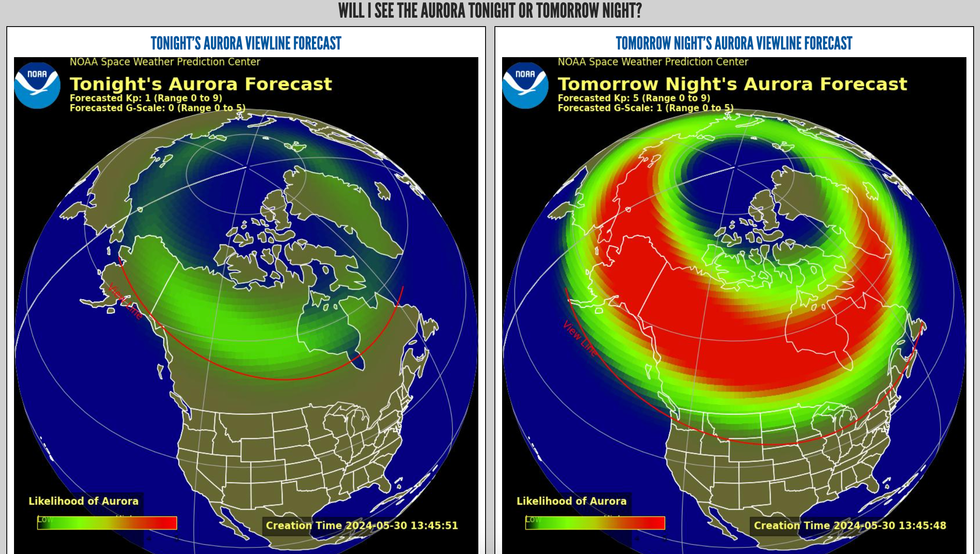The northern lights are expected to shine bright in BC and Alberta thanks to a 'severe' storm
Keep your eyes up Canada, because the northern lights are predicted to put on a show Thursday and Friday night and you won't want to miss it. Both Alberta and B.C. should have a good chance of seeing the aurora brighten the sky.
NOAA Space Weather Prediction Centre issued a severe geomagnetic storm watch and said that "highly elevated geomagnetic activity" is likely.
The G4 storm watch also said that a coronal mass ejection (CME) erupted on October 8, and is forecasted to arrive at Earth on Thursday, October 10.
As for timing, the organization said that it's expected anywhere from Thursday morning to midday, EDT time. "There is potential to reach G4 (Severe) upon arrival of this CME and throughout its passage."
The aurora dashboard map shows that B.C. should get a good view of the lights on Thursday and Friday night. Luckily the forecast in Vancouver is calling for relatively clear skies with a few clouds — Friday looking better for viewing — although the further away from the busy cities light pollution, the better for northern light viewings.
The University of Alaska Fairbanks aurora forecast also shows that high aurora activity is forecasted for both days and while northern B.C. and Alberta cities like Edmonton and Calgary should get more activity, Vancouver is in the view line. Other areas across Canada could also get a glimpse, like Winnipeg, Thunder Bay, and low on the horizon in Halifax.

 The NOAA's Aurora Dashboard.
The NOAA's Aurora Dashboard. 